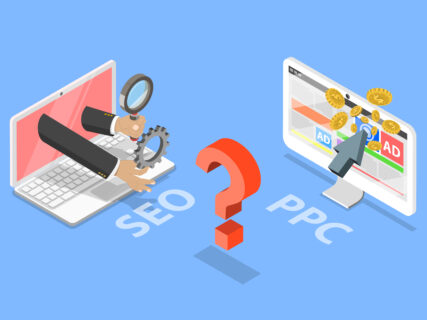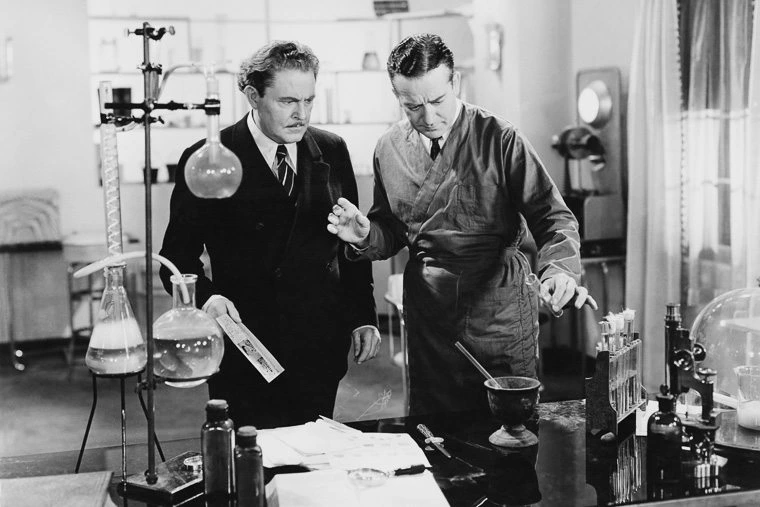
10 mins
OpenSEO vs PPC: The pros, cons, and how they can complement each other in a search campaign
5 mins
An SEO campaign can take a while to deliver results, and if you judged the quality of your SEO campaign exclusively on sales, particularly early on, you could find yourself frustrated with a lack of immediate results. Here’s how to tell if it’s any good and how to know when you should quit.
27th July 2015

The time it takes for improved rankings to translate into quantifiable conversions can be anywhere from six months to a year.
Most of our clients come to us with a very clear idea of why they want SEO: more sales. But if you judged the quality of your SEO campaign exclusively on sales, particularly early on, you could find yourself frustrated with a lack of immediate results. If on these grounds, you decide to leave your SEO agency, you’re likely to find yourself facing the same perceived inertia again, except this time you’ll be considerably out of pocket.
So how can you tell your SEO is working?
The argument for getting SEO is a logical one: improved search rankings should attract more traffic and that in turn, will lead to conversions. The difficulty with judging its effectiveness is that this process takes time – often quite a long time. The time it takes for improved rankings to translate into quantifiable conversions can be anywhere from six months to a year. And even then there are a number of other factors that can still prevent these from translating into sales.
Determining whether you are getting good value from your SEO thus requires that you break the campaign down into smaller milestones and measure progress against these instead.
You should see an initial improvement in rankings fairly early on, particularly if your site was not previously visible for the key search terms you have now selected.
How fast you move to the first page, however, will depend on a number of factors. Typically, the stronger the competition for a key search term, the longer it takes to improve your visibility for it. Putting more resources towards this can make a significant difference to the time it will take your site to climb in the rankings, but if your competition has been around for a long time or has benefited from a strong integrated marketing campaign, it can be especially difficult.
Though they are a good indicator of initial progress, positive ranking changes will not immediately translate into more traffic. It won’t be until your key pages have reached the first page of the search engine results that you are likely to start seeing clicks from organic search.
Though they are a good indicator of initial progress, positive ranking changes will not immediately translate into more traffic.
Rankings are only as good as the keyword research that informs your site’s information architecture. You could boast a series of prime rankings for a number of catchy keywords but it will mean nothing for your business if those keywords have no potential for conversion.
Thus rankings should always be viewed in the context of keyword value. What makes a valuable keyword is the subject of a lot of discussion and research and deserves an entirely separate blog, but we can outline the broad considerations here: A good keyword strikes a balance between broad and specific (think “moustache wax” rather than “wax”) and weighs transactional intent with high search volume (think “buy used car” rather than “car”).
It is also rigorously tested for context and opportunity. We can get a good idea of how Google is going to interpret your keywords by looking at the search results for that term. We may for instance start out thinking we’ve found a great keyword for one of the main service pages of a client’s site. But when a search reveals that it is also the name of a university course and the first page is monopolised by Wikipedia results and prospectus information from some of the world’s most influential universities, it’s back to the drawing board.
When it’s virtually impossible to compete for space on page one or if the search results for a key phrase are not directly related to your product or service, those keywords will have little value.
If they do their research well, it is quite likely that your SEO company will advise you on ditching certain keywords in favour of others. This is often necessary when clients have been previously been advised to simply go after high volume keywords without investigating keyword opportunity first. When readjusting the keyword focus, rankings usually experience a slump before recovering. But the final result will be a far more focused campaign.
If they do their research well, it is quite likely that your SEO company will advise you on ditching certain keywords in favour of others.
As your rankings improve you’ll start to show up in more searches. Google Webmaster Tools tracks these as “impressions”. At first impressions may not lead to clicks to your site, but they’re a good indicator of an SEO campaign on the right track. Once you are ranking on page one for some of your key terms (sometimes even page two for high volume queries) you should start to see actual clicks. Your campaign is starting to deliver.
At this stage you should see more organic traffic from search in your Google Analytics. You may also want to look at organic traffic by landing page to get a sense of how much search traffic your key pages are attracting.
If your improved rankings and growing impressions are not delivering more traffic it could be time to look at your meta data or possibly reevaluate your keyword focus altogether.
Along with your impressions and clicks, Webmaster Tools will give you the clickthrough rate (CTR) for keywords. This indicates the ratio of clicks (or visits) to impressions.
When the CTR is low (even though you are ranking on page 1) you are showing up in search but users are not convinced you are the right match for their search query. Often this can be addressed by rewriting your meta descriptions and tweaking your title tags. In other cases it could be an indicator that you are going after the wrong keywords.
If your improved rankings and growing impressions are not delivering more traffic it could be time to look at your meta data or possibly reevaluate your keyword focus altogether.
Even when your rankings are vastly improved and you are getting more traffic to your site, you still won’t be guaranteed sales. This is where design and marketing meet SEO. Good SEO can put your site in front of an audience. And it can even get the audience onto your site. But if they are not swayed by your product or if their user journey is hindered by poor functionality or obscured contact information, it won’t amount to much.
A comprehensive SEO campaign thus views design and user experience (UX) as integral to a successful outcome. When a site is not converting during the later stages of a campaign, it becomes necessary to set up goals for conversion tracking (if they aren’t already set), monitor bounce rate and track visitor behaviour for dropoff. This data will help identify any issues with conversion and user experience that should then be fed back to your design and development team (or your agency might undertake these tweaks themselves).
Though the logic behind the “good rankings = sales” argument for SEO seems linear and basic, the process is rather more cyclical and complex. The current definition of SEO is far broader than it has ever been, bringing together not just technical elements but also persuasive copywriting, traditional marketing philosophies, online PR, user-focused design and intuitive functionality. When any of these elements are missing or underperforming, you may not have the desired outcome.
This not only makes looking at these smaller milestones essential to measuring success as you go, but also promotes an approach focused on identifying shortcomings and addressing them early on.